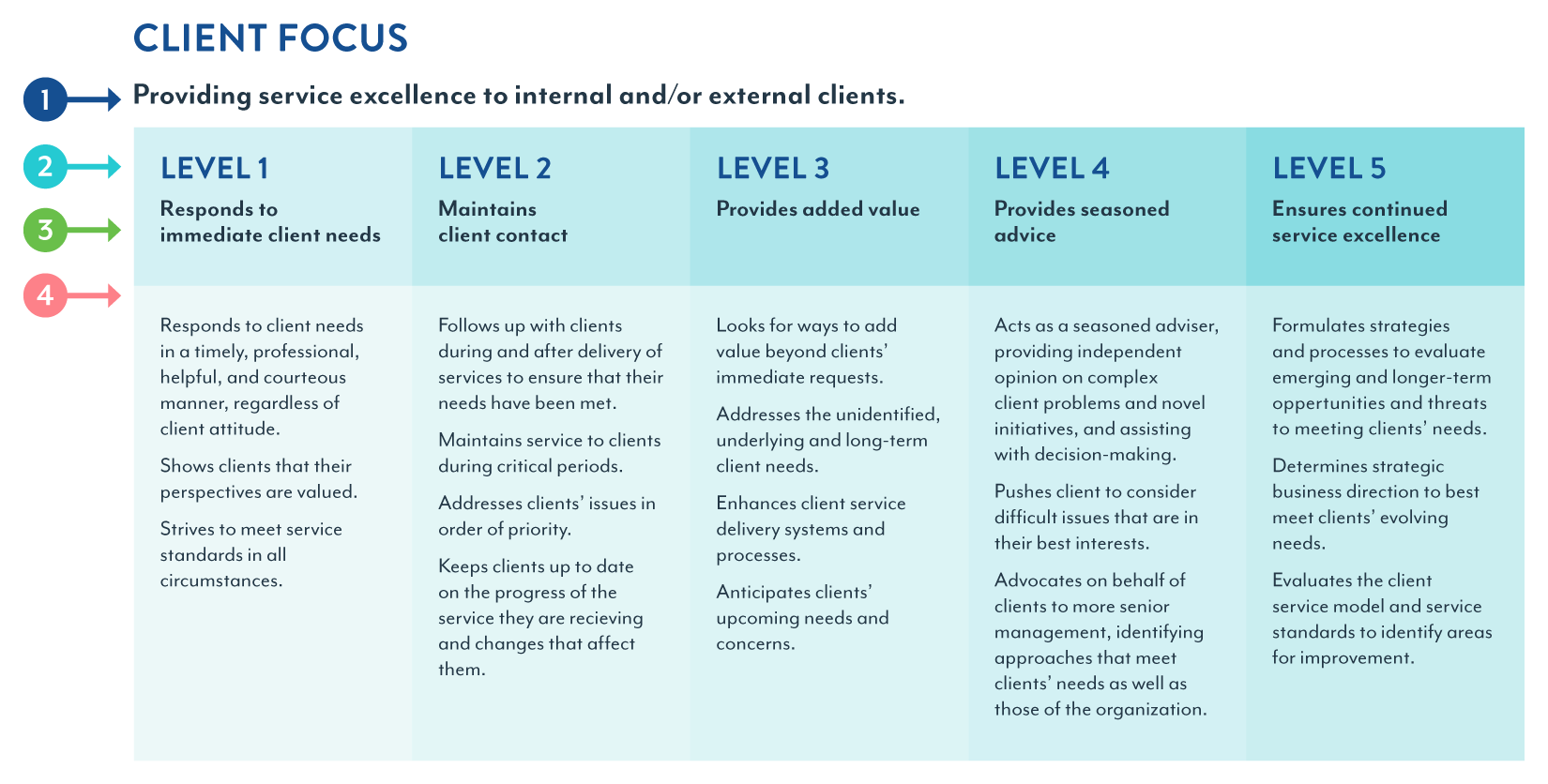Competency Management 101: Launch or Elevate Your Project

Quinto is a job description software by HRSG, a global leader in competencies. With over three decades of experience in the field, HRSG helps organizations around the world plan and launch effective competency management projects.
The difference between a thriving business and a struggling one is the right talent management program. Competency management is gaining popularity among global leaders because it identifies specific behaviors for success. Using competency management correctly can help your organization improve its ROI, effectiveness, adaptability, and overall success.
Are you ready to transform your workforce with competency management? First, you need to understand competencies.
What Are Competencies?
Competencies translate your organization’s strategic vision into observable behaviors employees must demonstrate on the job to be successful. Some use “competencies” and “skills” interchangeably, but this isn’t correct because competencies go beyond skills. They also describe the necessary knowledge, abilities, traits, and motivations an employee needs.

More than two-thirds (69.5%) of companies use competencies to improve talent management, including performance and learning programs.
Anatomy of a Multi-Level Competency
With multi-level competencies, you can break down a single competency into multiple progressive levels of proficiency. Think of the proficiency levels as a scale from entry-level to mastery over the specific competency. Different roles in your organization may need the same competency but at different levels of proficiency. Here's an example of what a multi-level competency can look like.

- The competency definition provides a high-level description of the competency.
- The proficiency scale. Each level reflects a progression from a basic demonstration of the competencies to a more complex and strategic demonstration.
- The notion for each level provides a high-level summary of the overall theme identified for that proficiency level.
- A behavioral indicator provides a clear description of the observable behaviors that an employee will demonstrate on the job.
What Is Competency Management?
Competency management aligns employee competencies with the organization’s vision and goals. This means hiring for, measuring, and developing competencies that support the organization’s overall strategy.
Benefits of Competency Management
By integrating competencies in all HR activities, organizations can:
- Evaluate candidates against standardized criteria that accurately reflect the nature of the role. This leads to better quality hires who are the right fit for the position.
- Improve overall employee performance. Employees receive clear instructions on how to effectively perform their tasks.
- Plan effective training programs. Measuring how well employees perform helps leaders find areas for improvement and provide training.
- Retain top talent. Employees are more likely to stay at a company when they can trust their leadership team. Less than a quarter (23%) of US employees strongly trust the leadership at their organization. Having transparent criteria against which leaders make business decisions can promote more trust.
- Develop career lattices that enable internal mobility. Employees want opportunities for career growth and development. Competencies show employees what they need to develop to achieve their career goal.
How to Launch a Successful Competency Management Project
If you aren’t already using competency management, now is a great time to start. Here’s how.
Step 1: Get a Competency Dictionary
Every competency management program needs a competency dictionary. A competency dictionary lists and defines all the competencies your organization needs now and in the future. If you don’t already have one, you have the option to either purchase or build your own dictionary.
Create a designated group of people responsible for the maintenance of the competency dictionary. As your business grows, you may need to add to the dictionary over time.
Step 2: Define Your Competency Architecture
Once you know the competencies you need, you can create a structure for your competency profiles. A competency architecture provides guidelines for creating competency profiles, including formatting, display, and content.
The types of competencies to include in your architecture are:
- Core competencies: shared by every employee at every level in the organization. They describe how employees can demonstrate the organization’s values and strengths in behavioral terms.
- Job-family competencies: shared by a family of related jobs (such as jobs in IT or sales). They include general competencies and technical competencies for successful performance in all jobs within that family.
- Job-specific competencies: additional requirements for a specific role or subset of roles, separate from the general job family competencies. They mostly include technical competencies and are highly specific to the role.
- Leadership competencies: shared by all leaders within the company. They may be given in addition to these other competencies in a competency profile or as a specific job family.
Step 3: Create Competency Profiles
A competency profile lists the competencies (at a specified proficiency level) that are required for success in a particular job. A competency profile is not the same as a job description, but a great job description should include aspects of the competency profile.
Competency experts recommend that each job in your organization have a competency profile attached to it. This way, every worker knows their responsibilities and how to move to different positions within the company.
.png)
Supporting Competency Management Technology
More people leaders are switching to online tools and systems to manage their competencies. But not all are created equal. Some online systems and tools only partially support competencies while others don’t at all. Over half (56%) of HR leaders don’t have HR technology that align with their current or future business needs.
To have a successful competency management project, leaders need technology that prioritizes competencies and allows them to implement these best practices.
Become a Competency Management Expert
If you're new to competency management, online sources can help you get started. Unfortunately, there is a lot of misinformation online about competencies and skills. Look for information from reliable sources, like industrial and organizational psychologists. For more tips and best practices on competency management from trustworthy experts, download the State of Competency 2024 Report.
%20(5).png)
Related Resources





